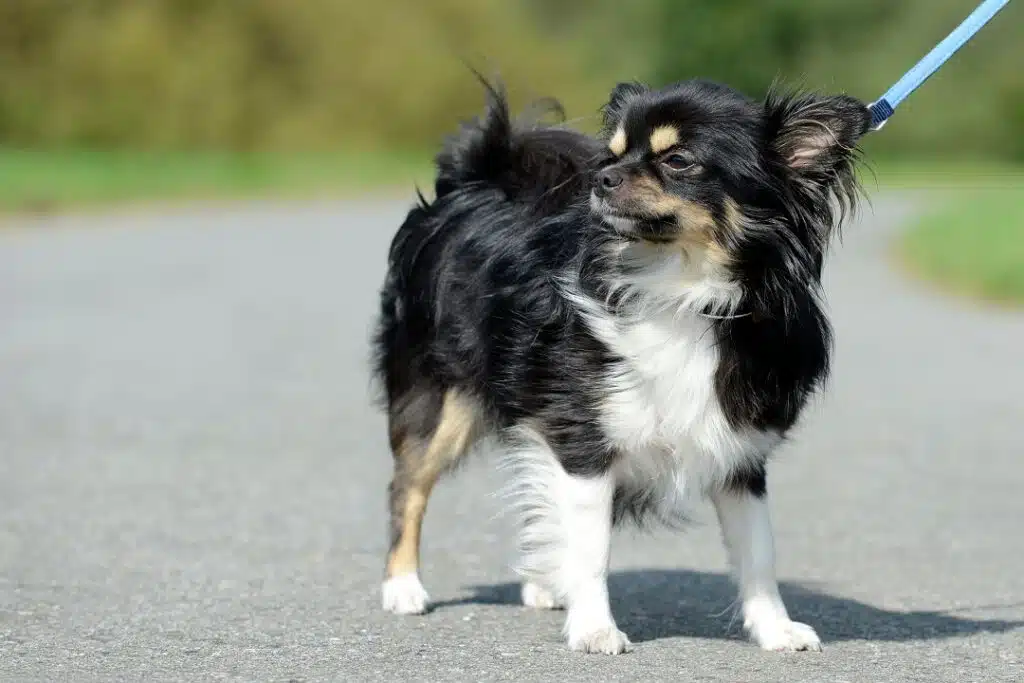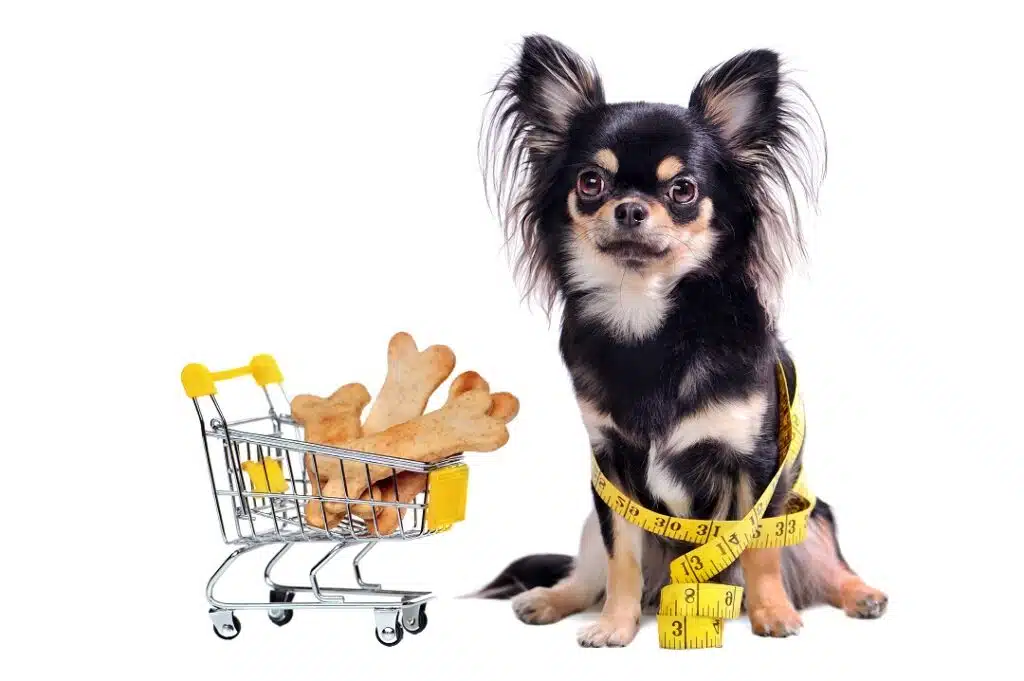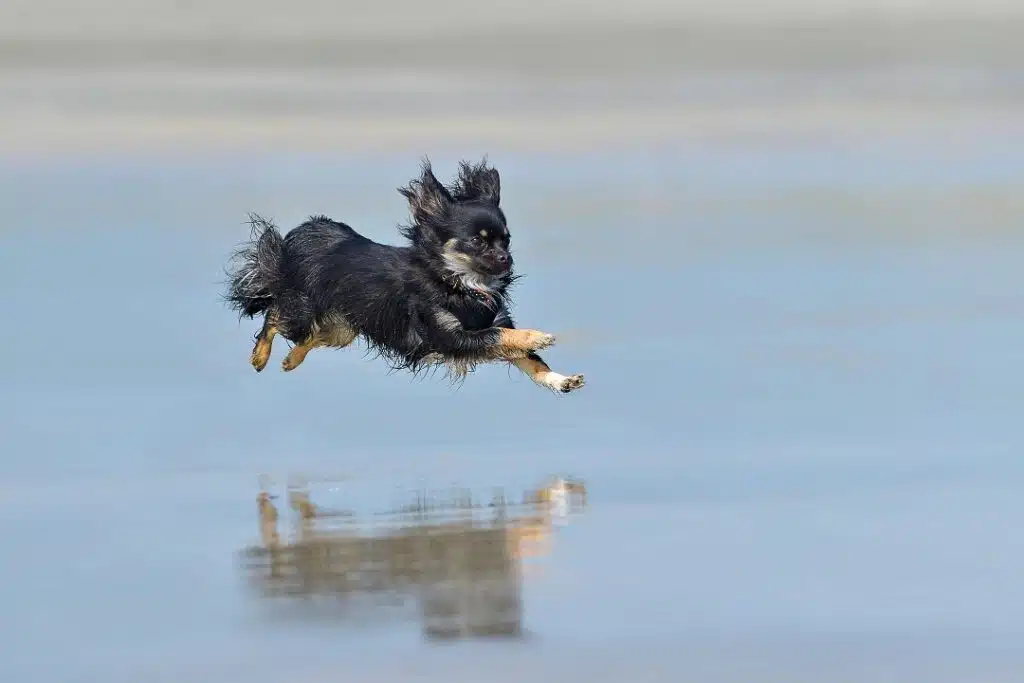The life expectancy of the Chihuahua is between 14 to 18 years with a median age of 15.5 years.
Females will live slightly longer than males; 1 to 2 years on average. 15.5 years is a few years longer than the life span of domesticated canines in general, which is 12.8 years.
This is due to two main elements: Small toy breeds generally live longer than larger dogs and the Chihuahua is a relatively healthy breed with most genetic health issues not being fatal.
This section will discuss the top leading causes of death and steps you can take to help your Chihuahua lead a long life.

Top Causes of Death for the Chihuahua Breed
The University of Georgia did an extensive study that traced over 70,000 dogs over a 20 year-long period to record the leading causes of death. The dogs were separated by age, with 2 groups: puppies and adults and by breed. Due to this extensive study, we have a very good idea at what the Chihuahua is prone to and even good methods helping to prevent early death.
The Top Leading Cause of Death for Chihuahua Puppies
With Chihuahua dogs under the age of one, the two leading causes of death are:
1. Infection – see below for details
2. Trauma – see below for details
The Top Leading Cause of Death for Adult Chihuahuas
1. Cardiovascular disease. 18.5% of Chihuahuas died due to cardiovascular disease. This is most common in senior dogs over the age of 14. Since the heart can only function for a set number of years, dogs that succumb to heart failure are often classified as dying of old age.
This disease can be categorized into 3 different classifications:
Heart failure: The heart is unable to pump blood as it should. This causes a lack of blood and oxygen to circulate as needed through a dog’s body.
Arrhythmia: This is an abnormal rhythm of the heartbeat which – when severe – are life-threatening if due to a decrease in the pumping function of the heart.
Heart valve problems: This includes stenosis (the heart valves due, not open enough to allow blood to flow as it should), regurgitation (the heart valves do not close properly which allows blood to seep through) and valve prolapse (the valve bulges into the upper heart chamber).

2. Trauma. A shocking 16.8% of Chihuahuas died due to trauma. This is a staggering number that all owners should consider very carefully. Causes of fatal trauma include being hit by a car, being accidentally stepped on, and falling from heights or being dropped.
It is shocking and important to note that this 2nd leading cause of death for the Chihuahua breed is preventable. Out of 82 different purebred dogs, the Chihuahua is the 7th breed most likely to die this way.
3. Infection. 10.5 % of adult Chihuahua died due to a fatal infection. Type of infection varied quite a bit and included:
Parvovirus – Despite there being a vaccine for this, many un-vaccinated dogs succumb to this disease. This attacks the gastrointestinal tract and the immune system, causing severe vomiting and diarrhea. It is spread via direct contact with an infected dog or via the feces of an infected dog.
Distemper – As with parvo, there is a vaccine for this.
Distemper is a highly contagious infection of the respiratory and/or gastrointestinal tract. It begins with weakness and coughing. As it progresses a dog may develop diarrhea. In later stages, it attacks the dog’s central nervous system, including the brain and spinal cord. A dog may have seizures and/or paralysis before dying.
Leptospirosis – There are many strains of leptospirosis (including tick disease) and not all dogs that catch this die from it. However, it can cause fatal liver and kidney damage. Most fatal strains of leptospirosis are spread via the urine of wild animals. This includes raccoons, skunks, and rats. Dogs can catch this when drinking from contaminated water; though it can also spread via sniffing infected urine puddles.
Sepsis – This refers to septic shock which is a severe infection in the body. Without treatment, it can cause acute kidney failure, liver failure and/or acute respiratory distress syndrome. Even with proper treatment, only roughly 40% of dogs survive.
There are many causes of sepsis, including prostatic infection, pneumonia and bacterial infection of the heart. However, with the Chihuahua breed, the one that owners will want to be concerned about is infection linked to tooth decay that, if left untreated, can spread throughout the body.
Effective Tips to Help Extend the Life Span of Your Chihuahua
Vaccinations
A Chihuahua can be immunized against diseases that are fatal to this breed. Never believe that a dog that is kept inside the majority of the time does not need inoculations; it only takes a moment of sniffing infected urine or a brief period of contact with an infected dog for the disease to spread.
Puppy vaccinations should include those for adenovirus cough and hepatitis, distemper, parainfluenza, parvovirus, and rabies. Optional vaccines include those for leptospirosis, coronavirus and Lyme disease. In regard to leptospirosis, this is only recommended for dogs that have a high chance of exposure because this breed tends to not react well to this particular vaccine. The veterinarian will speak to you to decide if there is enough wildlife near your home to warrant having this vaccination.

Many adult Chihuahuas will need booster shots; but, this does not necessarily need to be done each year since antibodies can last several years. You may wish to speak to the veterinarian about conducting routine titer tests. This is a method of measuring antibodies for certain diseases via a blood sample. If there are enough antibodies, your Chihuahua will not need a booster shot. If antibody levels are low, a booster will be recommended.
Safety First
Since trauma is the 2nd leading cause of death for this breed (16.8 %), Chihuahua’s life span can be drastically increased if safety precautions are put into place and followed by everyone in the household. Here are some tips for keeping your Chihuahua safe:
Keep your Chihuahua on a leash at all times when outside of the house.
Use a harness, not a collar, which will allow you better control and in case of emergencies, will allow you to quickly reel your Chihuahua to you without harming the neck. This also helps prevent collapsed trachea. A recommended harness is the Puppia Harness Soft B Harness Vest.
When exiting the house with your Chihuahua, scan the area first. Look for stray dogs or wild animals. At night, put on an outside light, bring a flashlight, and stand close to your dog.
When outside with your Chihuahua, remain aware of your surroundings. Large stray dogs have been known to jump fences as high as six feet and wildlife can encroach into private yards. Aggressive dogs can be encountered just about anywhere, including your normal walking route and the dog park. If it is typical for large dogs to roam in your neighborhood, consider carrying a whistle, an air horn like the Safety-Sport Dog Horn, or another type of deterrent.
Have a rule in place for the door. In the blink of an eye, a dog can dart outside when someone opens a door. It can help to have household members to knock before coming in so that someone can keep hold of the Chihuahua.
Teach your Chihuahua all basic commands. In the case of a dog running off, a firm and loud ‘Sit!’ or ‘Come!’ may stop them in their tracks. Shouting out a command to stop a dog from crossing the street may very well prevent that dog from being hit by a car.
No matter your Chi’s age, proof the house. Though known as ‘puppy proofing’ it’s important to do this even for adults. A dog may mouth a non-toy object even with no past history of doing this, simply for the reason of being curious. Routinely go over the floors of your home and any accessible areas to remove small items. This includes coins, pens and caps, jewelry, bottle caps, paper clips, batteries, and any other objects small enough for your Chi to bite on or swallow.
House plants should not be within reach, nor should electrical cords. If you cannot keep cords out of the way, consider using a product like PetCords Cord Protector to prevent your dog from being able to chew it.
All household members should be aware of this breed’s status as an ‘under-the-foot’ dog, meaning that he can easily be stepped on or tripped over. Always look before turning corners and switch on lights at night if your Chihuahua has free-reign in the house.

Follow proper handling techniques. Never hold your Chihuahua if you will be balancing other things in your arms. This breed is a pro at wiggling out of his human’s grasp. Children should be taught proper methods of picking up the dog and youngsters should be only allowed to carry a Chihuahua if they can handle this important task. If you find that you hold your Chihuahua a lot while busy with other things, consider using a carrier method like the Bro’Bear i’Pet Hands-Free Carry Sling.
Proper Dental Care
With infection being the 3rd leading cause of death (10.5 %) and a portion of that being due to dental infections that spread throughout the body, proper dental cleanings and maintenance of the teeth are imperative.
Professional checkups should be done once per year; this will include a comprehensive examination for potential problems and scraping of tartar at the gum line if needed. At home, you can brush your Chihuahua’s teeth or use a dental spray like Nylabone Advanced Oral Care Dog Dental Spray which can help remove plaque as well as freshen breath.
In addition, offering a daily dental chew like Greenie Teenie Dental Treats can help remove and prevent plaque buildup (the first step toward tooth decay).
A Healthy Diet
What you feed a dog over the course of his life span has a direct impact on his/her health. While no dog can live forever, with heart failure being the leading cause of death for this breed (18.5 %) feeding a wholesome diet will keep the body – including the heart – in optimal shape.
Steer clear of kibbles that have fillers like corn, soy, and cereals. Also avoid chemical preservatives, artificial flavoring and coloring, by-products, and generic meats or oils.
If your Chihuahua’s diet contains antioxidants, probiotics, and omegas, this will help boost immune health.
Very high grain counts and particularly low-value grains are not good for most dogs.

One choice that offers a good balance is Wellness Complete Health Natural for Toy Breeds which has a main base of chicken and brown rice (two ingredients that are easy on the stomach and rice seldom causes any sort of intolerance since the outer hull is removed). This has good levels of omega-3 and 6 and both pre and probiotics, plus glucosamine and chondroitin (excellent for joint health).
Exercise
Routine exercise plays a significant role in overall health dogs. Regular exercise keeps the heart, lungs, and other major organs healthy, helps a dog maintain good muscle mass and blood flow, boosts the immune system, helps regulate metabolism and appetite, and helps fend off a range of diseases including diabetes and some forms of cancer.
For your Chihuahua to meet the exercise requirements for this breed, these should be a minimum of two walks per day lasting for at least 20 minutes and this should be done at a fairly brisk pace that keeps your dog trotting along without labored breathing. There should also be sessions of fetch or other cardio activity at least several times per week and preferably daily.

Regular veterinary checkups
Yearly wellness checks are an important part of keeping a dog healthy and play an essential role in your dog’s life span. A range of tests includes stool sample testing, a complete blood count, and a physical exam that will help the vet spot any early signs of potential issues. Once Chihuahua transitions to a senior, wellness checks are done twice per year.






